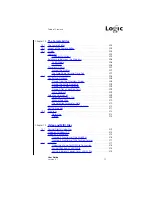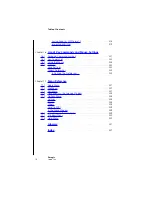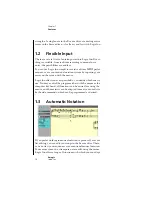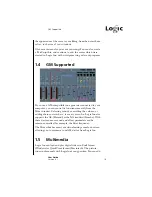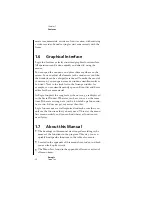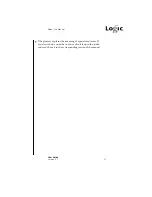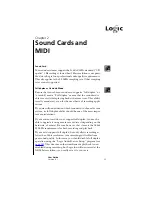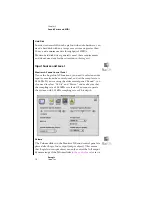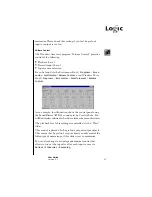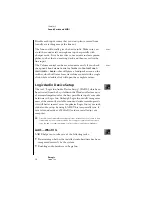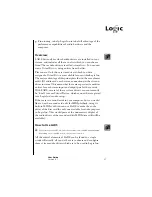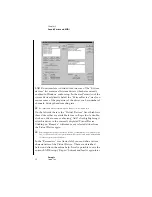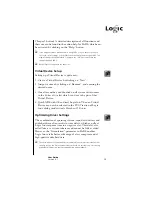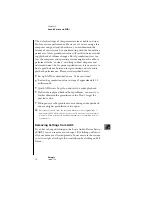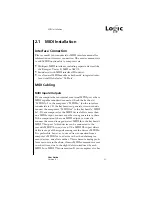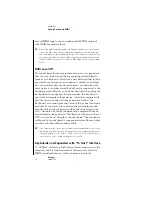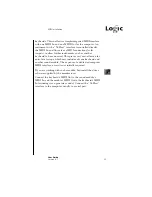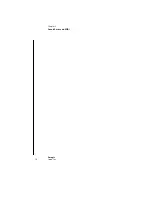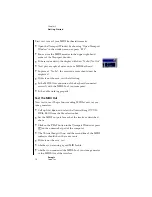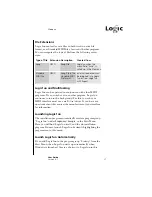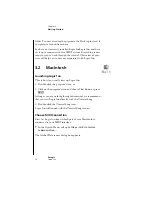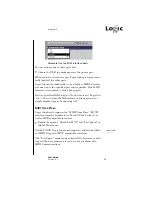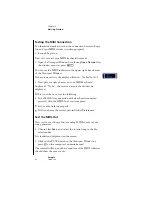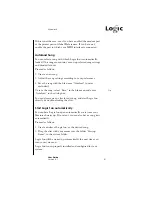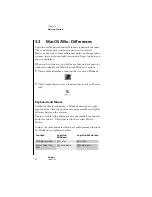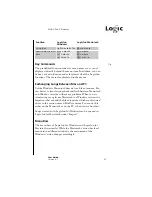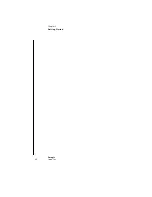
29
User Guide
Version 4.1
r
(“Import” button). A detailed description of all functions and
their use can be found in the online-help for LADS, which can
be activated by clicking on the “Help” button.
If you happen to make a mistake while using LADS, or if you are not sure if you
chose the correct settings, you should click on the
Cancel
button to quit LADS. This
way, all changes will be discarded. Clicking on the “OK” button will save the
changes and quit LADS.
Also ASIO devices appear in the driver list.
Virtual Device Setup
Setting up a Virtual Device is quite easy:
1. Create a Virtual Device by clicking on “New”.
2. Assign it a name by clicking on “Rename”, and entering the
desired name.
3. One after another, double-click on all system driver names
in the System devices list which you want to be part of that
Virtual Device.
4. Quit LADS with OK and start Logic fun. The new Virtual
Device can now be selected in the PC AV section of Logic
fun’s dialog window Audio Hardware & Drivers.
Optimizing Driver Settings
The combination of operating system, sound card drivers and
audio hardware often results in time delays, which can affect
Logic fun’s response time in a negative way. This delay, also
called latency, is system-inherent and cannot be fully avoided.
However, the “Granulation” parameter in LADS enables
Logic fun to take better advantage of a fast computer and of
high-quality audio hardware.
The optimization of this parameter is not absolutely necessary to provide full func-
tionality in Logic fun. Only experienced users should use this function, since wrong
granulation settings can cause problems during audio playback.
Summary of Contents for Logic fun
Page 1: ...E Sof t und Hard wa re Gmb H l User Guide for Logic fun Version 4 1 March 2000 English ...
Page 2: ......
Page 6: ......
Page 8: ...Emagic Logic fun 8 ...
Page 26: ...22 Chapter 1 Features Emagic Logic fun ...
Page 38: ...34 Chapter 2 Sound Cards and MIDI Emagic Logic fun ...
Page 48: ...44 Chapter 3 Getting Started Emagic Logic fun ...
Page 72: ...68 Chapter 4 MIDI Tutorial Emagic Logic fun ...
Page 96: ...92 Chapter 5 Using Logic fun Emagic Logic fun ...
Page 110: ...106 Chapter 6 Transport Functions Emagic Logic fun ...
Page 140: ...136 Chapter 8 Audio Basics Emagic Logic fun ...
Page 162: ...158 Chapter 10 Mixer and Effects Emagic Logic fun ...
Page 174: ...170 Chapter 11 The Event List Emagic Logic fun ...
Page 206: ...202 Chapter 13 The Score Editor Emagic Logic fun ...
Page 224: ...220 Chapter 15 Video and MIDI Files Emagic Logic fun ...
Page 240: ...236 Glossary Emagic Logic fun ...
Page 256: ...252 Index Emagic Logic fun ...

